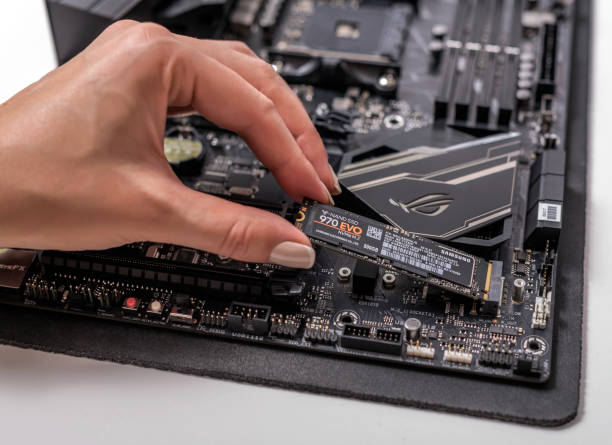Remember the days when we had to wait endlessly for our games to load, or when we constantly ran out of space after installing just a couple of high-end titles? Storage has always been a crucial aspect of gaming, and with the modern gaming landscape changing so rapidly, the need for efficient and spacious storage solutions makes the gaming laptops worth their investment.
Enter the realm of Solid State Drives (SSDs). While HDDs served us well for many years, the evolution of gaming demands something faster, more reliable, and capable of keeping up with the increasing complexities of modern titles. “How Much SSD Do I Need for Gaming?” is a question I’ve asked myself as games continue to grow in size and scope.
Throughout this article, I’ll delve deeper into understanding SSDs, their importance in our current gaming era, and provide insights to help you determine the ideal SSD storage size for your gaming needs. Whether you’re a casual gamer or a hardcore enthusiast, ensuring you have the right amount of SSD space can elevate your gaming experience to new heights.
Basic Definition and How SSDs Function
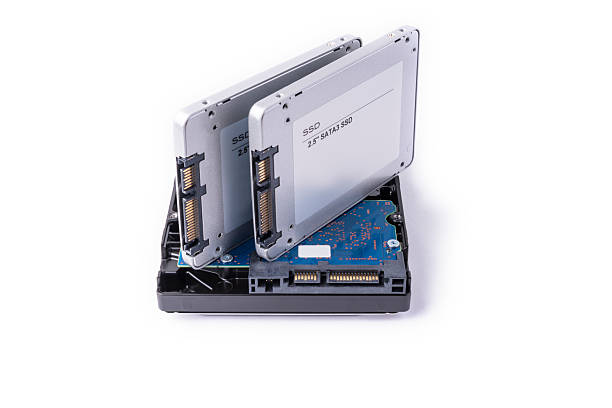
Solid State Drives, commonly known as SSDs, represent a revolutionary leap in the realm of data storage. Unlike the traditional Hard Disk Drives (HDDs) that use spinning disks to read/write data, SSDs store data on interconnected flash-memory chips. These chips are non-volatile, meaning they don’t lose data when power is cut off. This fundamental difference in technology brings about a series of advantages.
Advantages of SSDs Over HDDs in Context to Gaming
- Speed: One of the most noticeable benefits of an SSD over an HDD is the speed. For gamers, this translates to quicker game installations, faster loading screens, and smoother in-game asset loading. Gone are the days of long waits during level transitions. With SSDs, you’re immersed in the gaming world in mere seconds. From connecting to Xbox to playing the heavy games like Roblox. SSD redefines the gaming experience on laptops.
- Durability: SSDs lack the moving parts found in HDDs, such as spinning platters or read/write heads. This means they are inherently more resistant to physical shock. For gamers, especially those on the go with gaming laptops, this ensures that your saved games and valuable in-game assets remain safe and intact even if your device takes a minor bump.
- Faster Load Times: Games are becoming increasingly detailed, with richer environments and more complex mechanics. With an SSD, gamers can experience faster load times, ensuring that they are plunged back into action without any frustrating waits. This is particularly beneficial in open-world games where assets are continuously loaded based on player movement.
Why SSD Size Matters in Gaming?
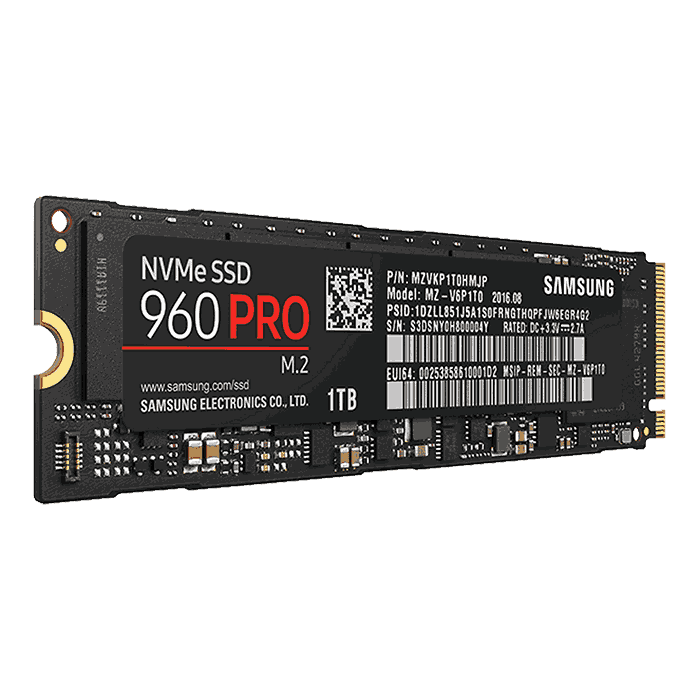
Here are some crucial factors that drive the need for SSD:
Game File Sizes Modern gaming is a testament to how far we’ve come in terms of graphics, storytelling, and mechanics. However, this progress comes with a cost: storage space. According to Reddit Users, It’s not uncommon to find AAA titles these days that require 100GB or more of storage. Games like “Red Dead Redemption 2″ ,”Call of Duty: Modern Warfare” or “World of Warcraft” are known for their massive installation sizes. As developers push the boundaries of realism and detail, game sizes will only continue to grow.
Multiple Games and Applications Many gamers, like myself, love variety. We hop from an action-packed shooter to a strategic simulation game, to perhaps a story-rich RPG, all in a day’s play. This need for variety necessitates ample storage. Moreover, gamers often use applications like Discord for communication or streaming software like OBS, which also take up space. If you’re a multitasker or someone who loves playing multiple titles without the hassle of constantly uninstalling and reinstalling, ample SSD space becomes a necessity.
Additional Files The game installation is just the beginning. Developers regularly roll out updates to enhance gameplay, fix bugs, or introduce new content. Then there are Downloadable Contents (DLCs) that add new stories, characters, or assets. For the modding community, mods can not only enhance gameplay but can also consume significant space. And let’s not forget patches, which are vital to ensuring your game runs smoothly. These additional files can quickly fill up your SSD if you’re not prepared.
In essence, while the initial game installation already demands a lot, the subsequent additions mean you should always have some extra space in reserve.
History of SSD Drives
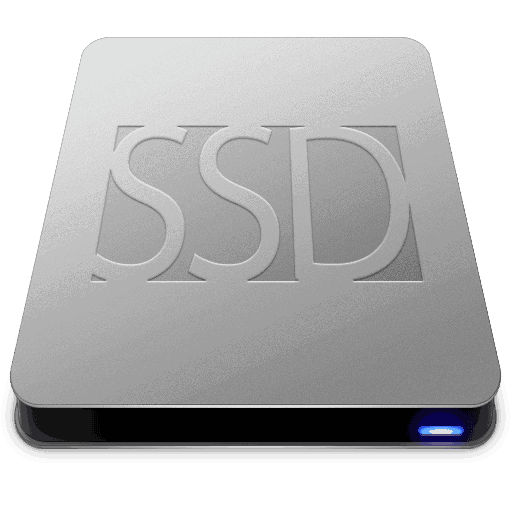
SSD drives have brought a massive revolution since they were launched in 1950.
SanDisk shipped the first commercial SSD drive in 1991. It was a PCMCIA configuration with 20 MD SSD. It was used for the ThinkPad laptop by IBM and bought for $1000. After that, San Disk introduced 2.5-inch and 3.5-inch SSDs with PATA interfaces
Type of SSD
There are various types of SSD available in the market in terms of storage space and their configuration, size, and shape. The technical term that refers to the size and shape of SSD is called Form Factor.
The most common form factor SSDs are available as follows:
1. 5-inch SSD
Similar to old HHD, this Solid State Drive is primarily compatible with a desktop computer. Their shape and size are closely matched with Hard Disk Drives. You can easily replace them with any HDD computer. It would help if you had a SATA cable’s HDD to establish a connection between the system and the new SSD.
2. 2SSD
It is a small size configuration that is compatible with most laptops motherboards. You can easily integrate to various desktops too. You can use multiple SSD for a desktop motherboard. Hence, you have an opportunity to experiment with a lower-capacity SSD to check if it is working well with your system.
For a smooth gaming experience, you should consider an SSD of 512 GB for any casual gamer or 1 TB for severe gamers. However, considerations such as Graphics Card, Operating system, and CPU when choosing the SSD.
How Much SSD Do I need for Gaming?
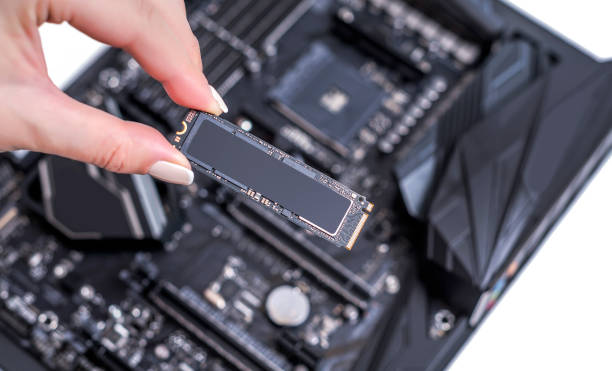
General Recommendations for SSD Sizes Based on Gaming Habits:
For Casual Gamers:
- Gaming Profile: Casual gamers are those who game occasionally, not necessarily chasing the latest AAA titles. Their gaming library might consist of indie gems, classic titles, or games that don’t demand the high graphics power of modern AAA games. Games like “Stardew Valley”, “Undertale”, or older titles from series like “Assassin’s Creed” or “Elder Scrolls” would be typical choices.
- Recommendation: Given their sporadic gaming habits and the nature of the games they play, an SSD of 250GB – 500GB should suffice. This allows for several smaller games and a couple of larger titles, with some space left for other applications or files.
Acer Aspire 5. Found on Amazon, this model often comes with a 256GB SSD. Given its budget-friendly nature, it’s great for casual gaming and day-to-day tasks.
For Enthusiast Gamers:
- Gaming Profile: Enthusiast gamers are more invested in their gaming hobby. They play regularly and have a diverse game library that includes both AAA and indie titles. They might be playing “Cyberpunk 2077” one day and switching to “Hollow Knight” the next.
- Recommendation: A more diverse and extensive game library demands more storage. An SSD range of 500GB – 1TB should cater to their needs, allowing them to have a multitude of games installed at any given time.
ASUS TUF FX505DT. This model, available on Amazon, typically comes with a 512GB SSD or more. It’s tailored for gaming with its robust graphics and processing capabilities, making it suitable for enthusiast gamers.
For Hardcore or Professional Gamers:
- Gaming Profile: These gamers are on the extreme end of the spectrum. Not only do they own multiple AAA titles, but they are also always on the lookout for new releases. They might also be into content creation, recording their gameplay, saving epic replays, and possibly even streaming. Their gaming isn’t just a hobby; it’s a significant part of their life or even their profession.
- Recommendation: With such extensive needs, these gamers should consider 1TB SSDs and above. This ensures that they don’t frequently run into the need to delete games for space or move their recordings to another storage device.
Acer Predator Helios 300. Available on Amazon, this beast of a machine often comes with a 1TB SSD, sometimes even paired with an additional HDD for extra storage. Its high-end specs are geared towards the most demanding games and multitasking needs, making it a top choice for hardcore or professional gamers.
Your gaming habits largely determine the SSD size you should consider. While it’s always better to have extra space, it’s equally important not to overshoot your budget for storage you might not utilize.
Additional Considerations When Choosing SSD Size for Gaming
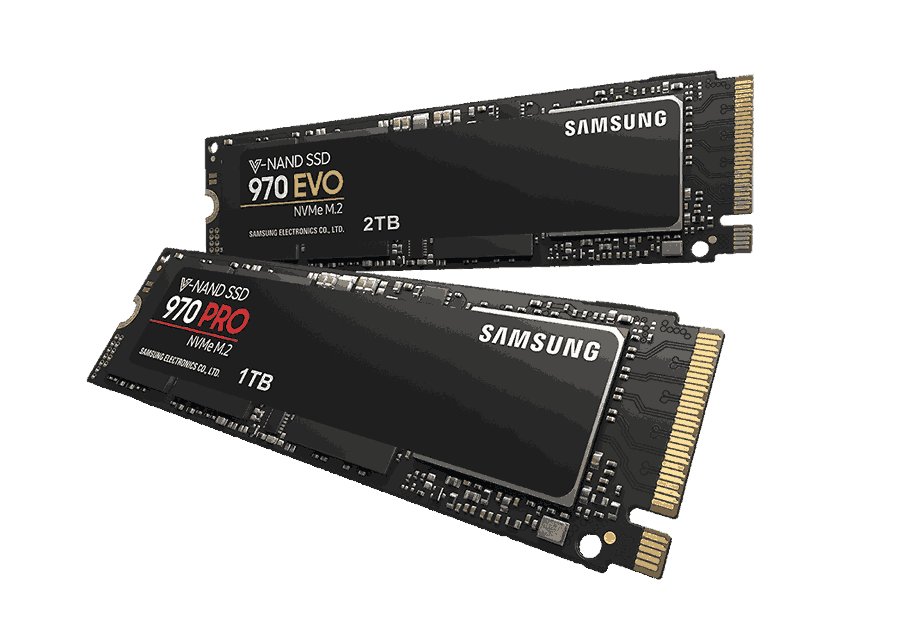
Operating System (OS) and Essential Applications:
- Importance of Dedicated Space: Your laptop’s operating system, whether it’s Windows, macOS, or Linux, requires its own dedicated storage space. Apart from the initial space the OS occupies, it also requires additional room for updates, temporary files, caches, and essential applications that help the OS run smoothly.
- Average OS Size: The size of operating systems can vary, but to give a general idea: Windows 10, for instance, requires about 20GB for the 64-bit version. However, when you factor in future updates, essential pre-installed apps, and buffers, it’s safer to assume that around 50GB will be taken up by the OS and its fundamental operations.
- Applications and Software: Common applications like Microsoft Office, Adobe Creative Suite, web browsers, and communication tools such as Zoom or Skype, can collectively take up a significant amount of space. If you use specific tools regularly, account for their space needs when choosing your SSD size.
Non-Gaming Needs: Storing Media, Software, and Other Files:
- Media Files: If you’re someone who stores a lot of personal media on your laptop – such as movies, music, photos, and videos – these can quickly eat into your available storage. High-definition videos, in particular, can take up a lot of space.
- Work and Personal Software: Beyond gaming and basic applications, you might need specific software for work, studies, or hobbies. Think of photo editing software, programming IDEs, virtual machines, or even 3D modeling tools. These can have sizable installation footprints and may also generate large files when in use.
- Documents and Miscellaneous: Over time, the plethora of documents, downloads, and miscellaneous files that accumulate can be surprisingly space-consuming. Regular backups, system restore points, and even browser caches can add to this.
Future-Proofing: Accounting for Expanding Game Sizes and Other Needs:
- Evolving Game Standards: As technology progresses, games are naturally becoming more detailed, immersive, and consequently, larger in file size. A game that’s considered large now might be average in a couple of years. For example, while a game requiring 50GB was deemed massive a few years ago, current AAA titles can easily require upwards of 100GB.
- Avoiding Frequent Upgrades: Investing in a slightly larger SSD than you currently need might seem like an unnecessary expense now, but it can save you money and hassle in the long run. Upgrading SSDs, especially in laptops, can be challenging or, in some cases, impossible if the storage is soldered onto the motherboard.
- Keeping Performance Optimal: SSDs perform best when they aren’t filled to the brim. Keeping a buffer can ensure better longevity and performance. As a rule of thumb, it’s often recommended to keep at least 10-15% of your SSD free.
While the primary purpose of your gaming laptop might be gaming, it’s essential to consider the myriad of other tasks and needs that will also utilize storage space. By accounting for these additional considerations, you can make a more informed choice that suits both your present and future needs.
Optimizing SSD Storage for Gaming
-
Regularly Uninstalling Games Not in Play:
- Why it’s Essential: Games, especially modern ones, can occupy a significant portion of your SSD. Over time, as you explore new titles or return to older ones, you might accumulate a collection of games you no longer play.
- The Right Way: Instead of merely deleting game folders, use the uninstall option either within the game launcher (like Steam or Epic Games) or through your laptop’s control panel to ensure that all related files and settings are removed. This will free up space and prevent potential software conflicts.
-
Using Cloud Storage for Certain Files:
- Benefits: Cloud storage solutions like Google Drive, Dropbox, or OneDrive allow you to store files online, saving precious SSD space. They can also facilitate easy sharing and access from multiple devices.
- Best Practices: Prioritize uploading documents, photos, and non-essential files to the cloud. Avoid storing large game files or essential software on the cloud, as they can be slow to access and use up your data cap.
-
Utilizing External Storage for Backup:
- Flexibility & Portability: External hard drives or SSDs provide a flexible option for backup, especially for large files that don’t need regular access, like old game recordings or software setups.
- Recommendation: Ensure that your external drive has a fast connection type (like USB 3.0 or USB-C) for quicker file transfers.
Price vs. Performance: Balancing SSD Size and Cost
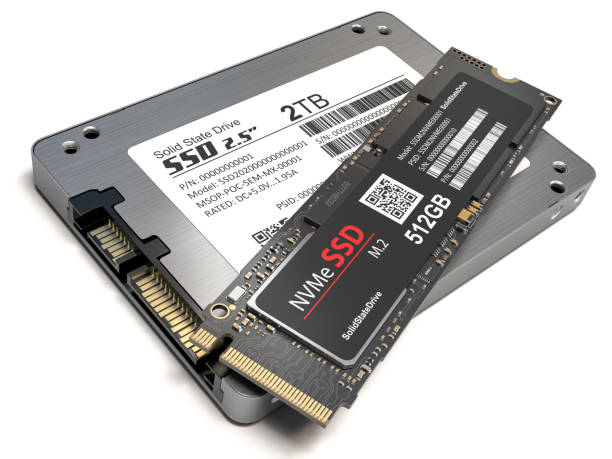
-
Cost Implications of Different SSD Sizes:
- Scaling Prices: Generally, the cost per GB decreases as SSD sizes increase. However, cutting-edge large SSDs, like those over 2TB, might have a premium price.
- Other Factors: The speed and type of SSD also impact the price. NVMe SSDs, for instance, are generally faster and more expensive than SATA SSDs.
-
Performance Benefits:
- Faster Load Times: One of the most noticeable benefits of having games on an SSD is the significant reduction in load times, ensuring smoother transitions and gameplay.
- Improved System Performance: Beyond gaming, an SSD boosts overall system responsiveness, faster boot times, and quicker software launches.
- Durability & Longevity: SSDs, having no moving parts, are less prone to physical wear and tear than HDDs, potentially offering a longer lifespan.
-
Justifying the Costs:
- Short-Term vs. Long-Term: While SSDs, especially larger ones, can be a significant investment upfront, their long-term benefits in performance, durability, and user experience can justify the initial cost.
- Analyzing Needs: If you play a few games frequently, you might not need a vast SSD. However, if you’re a gaming enthusiast with a vast collection or someone who also uses heavy software, investing in a larger, faster SSD might be worthwhile.
Optimizing and managing your SSD storage ensures a seamless gaming experience. It’s also vital to balance the immediate costs with the long-term benefits to make the most out of your investment.
Frequently Asked Question
What is the latest SATA interface?
SATA 3 is the latest SATA interface. You can expect transmission rates of 6 Gpbs which is excellent for gamers to avoid lag.
Is SSD durable?
SSD generally has a lifespan of 3-5 years.TBW (Terabytes Written) refers to the durability of SSD. Generally, SSDs are 25% more durably than HDDs.
Conclusion
SSDs are an excellent package that comes with improved data transmission and good storage capacity. However, the overall gaming experience depends on the entire system comprising the CPU, RAM, and GPU. Hence, the SSD you finalize must be compatible with the whole system to deliver the expected results.
![How much SSD do I Need for Gaming [2023] Updated](https://cdkeyshere.com/wp-content/uploads/2023/08/ssd-need-for-gaming.jpg)
